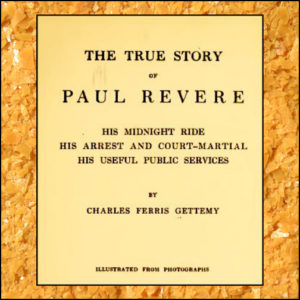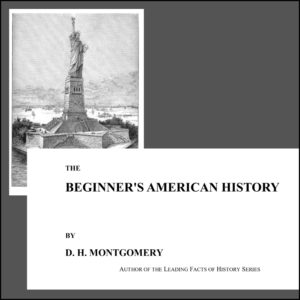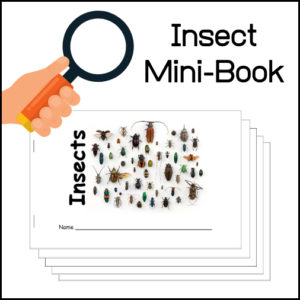Description
All-Access members do not pay for this or any resource. Become an All-Access member today!
________________________
|
Get the MOST from My Teaching Library by connecting with us here: |
$2.25
TWO ready to use Venn Diagram Science activities for students to use to compare 2 or 3 insects. On each, students will list the insects they will compare and contrast, draw a picture of each and then complete the Venn Diagram.
Extend the activity by asking students to write a paragraph or short report about their discoveries!
All-Access members do not pay for this or any resource. Become an All-Access member today!
________________________
|
Get the MOST from My Teaching Library by connecting with us here: |
Only logged in customers who have purchased this product may leave a review.

This is a downloadable copy of the book. (358 pages)
About the book: Published in 1905, Gettemy writes of Paul Revere’s midnight ride, his arrest, court-martial plus his ‘useful public services’. Paul Revere ( December 21, 1734 – May 10, 1818) was an American silversmith, engraver, early industrialist, and a patriot in the American Revolution. He is most famous for alerting the Colonial militia to the approach of British forces before the battles of Lexington and Concord, as dramatized in Henry Wadsworth Longfellow’s poem, “Paul Revere’s Ride”. Revere was a prosperous and prominent Boston silversmith, who helped organize an intelligence and alarm system to keep watch on the British military. Revere later served as a Massachusetts militia officer, though his service culminated after the Penobscot Expedition, one of the most disastrous campaigns of the American Revolutionary War, for which he was absolved of blame. Following the war, Revere returned to his silversmith trade and used the profits from his expanding business to finance his work in iron casting, bronze bell and cannon casting, and the forging of copper bolts and spikes. Finally in 1800 he became the first American to successfully roll copper into sheets for use as sheathing on naval vessels.

This 257-page book holds an 1893 copyright and was written to give information about historical figures living just before and during the beginning of United States history. It is not meant to be used as a textbook but rather a supplement to add stories and facts about the people written about within the pages. It is recommended for 5th-12th grades.
Suggested uses: Use with your regular curriculum to add another layer of information or give to students to use as a source information when doing research and/or projects.
Because of the 1893 copyright, this is a public domain resource. All-Access members may download it for free (as with all resources on our site). Non-members are asked to purchase this resource at a very low cost to help cover data storage and transfer costs.

Help your students learn about insects with their very own 12 page mini-book! This is a perfect tool to use as a study aid as it includes important facts about insects such as…the four things all insects must have: 3 body parts, 2 antennae, 6 jointed legs and an exoskeleton. This little book will also give examples of creepy crawlies that are not insects, how some insects have 1 or 2 pair of wings, how some are helpful and some are harmful. At the very end of the book, students are asked to draw their favorite insect.

Cross-curricular and engaging, this Amelia Earhart project-based unit will have students using a variety of Language Arts skills as they learn about history!
Includes:


Reviews
There are no reviews yet.